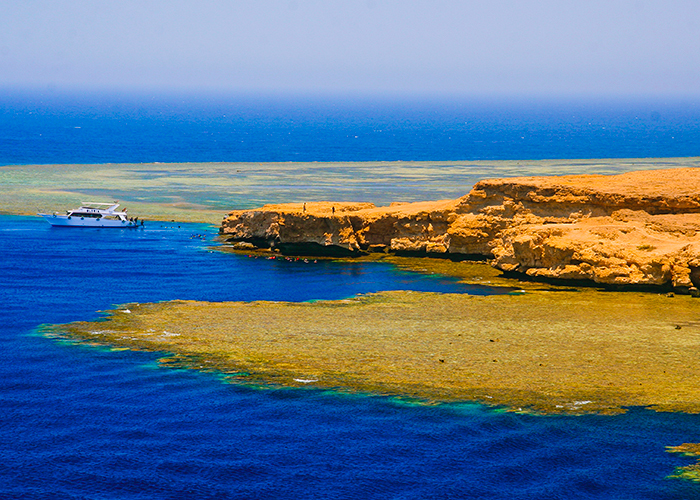Establishment of Ras Mohammed Marine Reserve
Ras Mohammed’s national park is the only federal marine reserve in Egypt, and it was also the first reserve of its kind to be set up. The area between the main port of Sharm el-Sheikh and the southern border of the Nabq conservation area was made a protected area in 1983, but it was only 97 km2 at the time.
Since then, it has grown to 480 km2 and includes marine and land areas on the Ras Mohammed Peninsula and Tiran Island. In 1983, only 97.2 square kilometers were set aside when the park was made. Only 97 km2 of territory was set aside as a protected area for the first time in 1983.
What is Ras Mohammed Park famous for?
The park is known for its fossilized coral platforms, which look like ancient coastlines. Because of these piers, the park has become very well-known. These reefs range in age from 15,000 to 2 million years (to date).
Recent reef fossils look a lot like modern coral reefs in terms of the kinds of species they had and how they were built. Since they were made not too long ago, these reefs have a lot in common. So far, species from the Porites, Goniastrea, and Galaxea genera, among others, have been found. The fossils that might be found in the park make it clear that, just like modern reefs, fossil reefs give shelter to many different kinds of marine life.
This is clear from the fact that reefs from the past look a lot like reefs today. By looking at old coral reefs, scientists may be able to figure out how the sea level and weather were in the past. They might also learn how these natural disasters affected the ecosystems of coral reefs.
Because there are coral reefs in the area, people who go to the National Park may have the chance to do something that can only be described as excellent. It’s easy for a visitor who isn’t prepared to be overwhelmed by the reef’s diversity, but reef life has a strict order. The guest will still be impressed.
When looked at more detail, even a person who doesn’t know much about science can see more apparent links. Each species that lives in a reef has its way of breaking down the food it eats. Damselfish are essential to the reef’s algal ecosystem because they keep it safe and healthy. At the bottom of coral reefs, parrotfish dig through the sand to find the algae they eat. After that, they’ll release clouds of carbonate that they haven’t digested yet.
These clouds will eventually settle and harden the reef. Cleaner wrasses are often found with big fish like perches, rays, and barracudas. They remove parasites from the mouth, gills, and outside of their hosts. Sharks, barracudas, and other animals that hang out on the reef eat reef fish schools because they are tasty.
Even though the ecology of the reef is complicated and often “confusing,” it is still exciting and fun to learn about it. The reef’s physical structure and the delicate balance of its ecosystem are at risk when people take things from it without being careful. To make sure this ecosystem will be around for a long time, people must use it in a way that keeps everything in balance. Taking care of reefs and the delicate ecosystems they support is essential.
Wildlife in Ras Mohammed Park
At first glance, the park may seem empty, but it is home to the desert fox, the Nubian caribou (in the steepest parts of the park), and many small animals, reptiles, insects, and migratory birds. Most of these animals come out only at night, so it isn’t easy to see them in their natural habitats. You might see a fox between the main and Yolanda beach. You don’t have to give them food, but you should always make sure they have clean water.
As long as care is taken, working with them is not dangerous. You may see little foxes lying in the sun at the end of spring. Most wild parts of the world that humans have not tamed are challenging to access. Gray herons, goliath herons, coral herons, and similar but smaller green herons all live in protected habitats in the park.



0 Comment